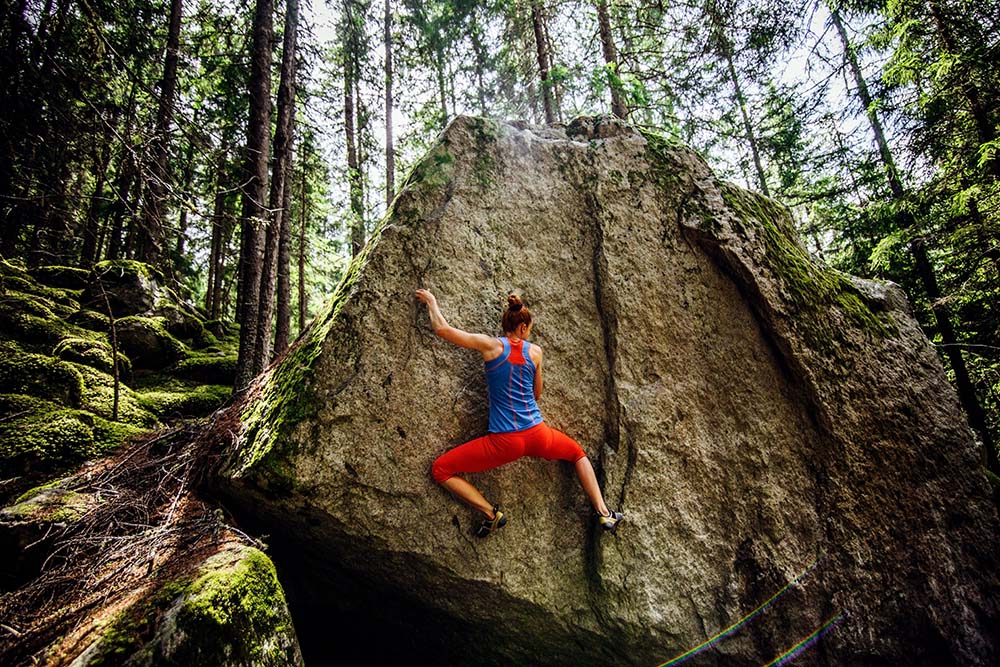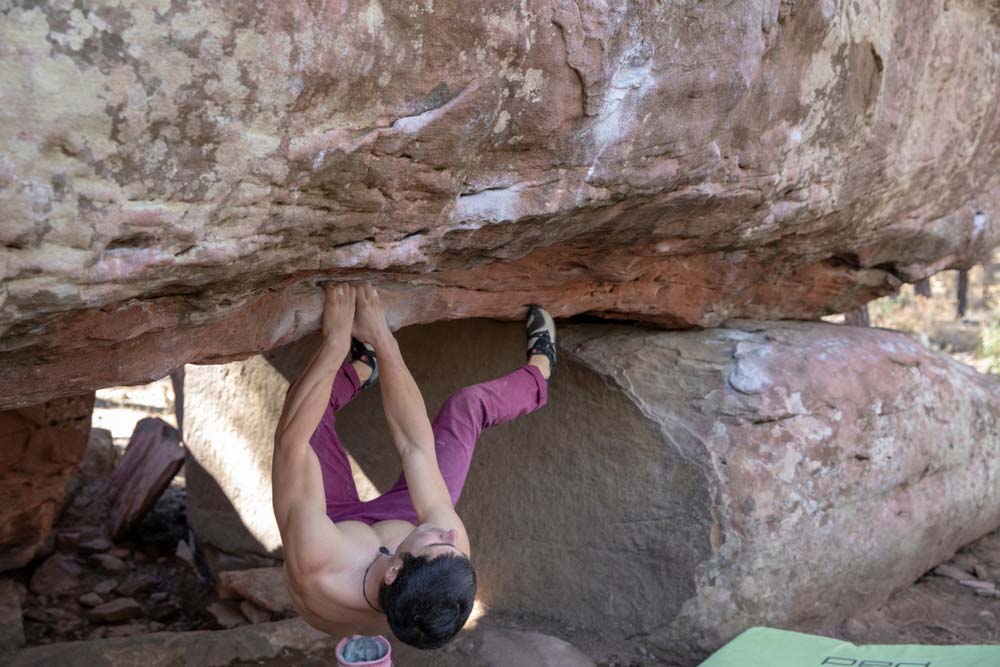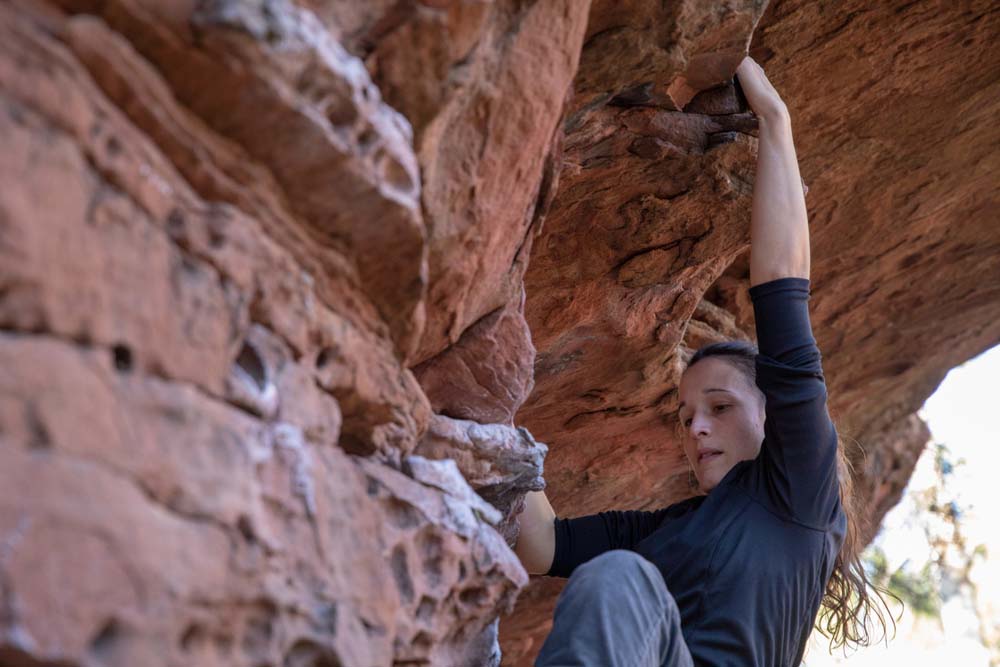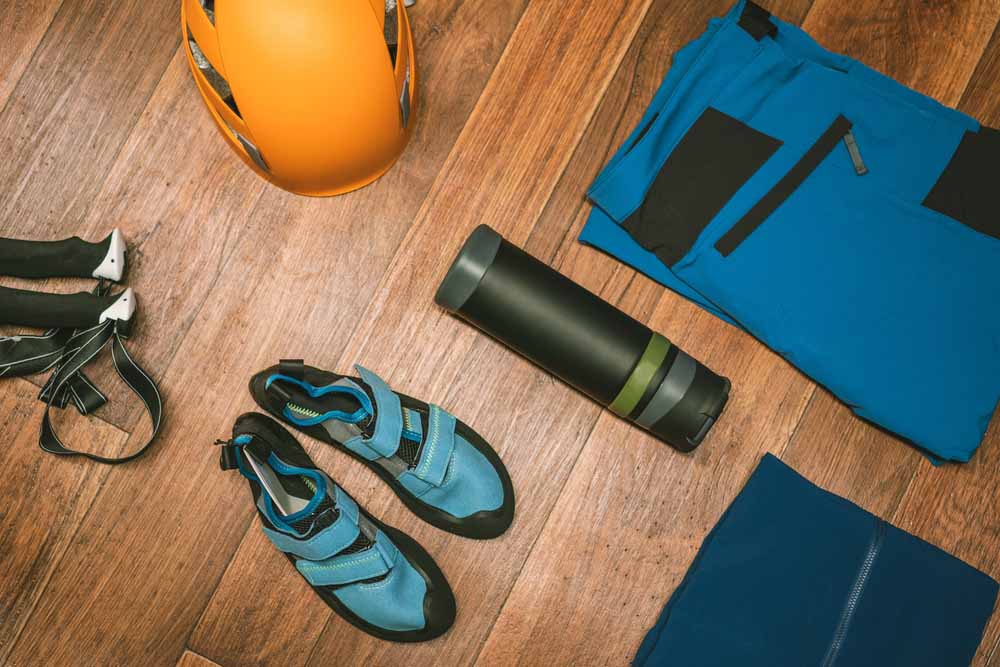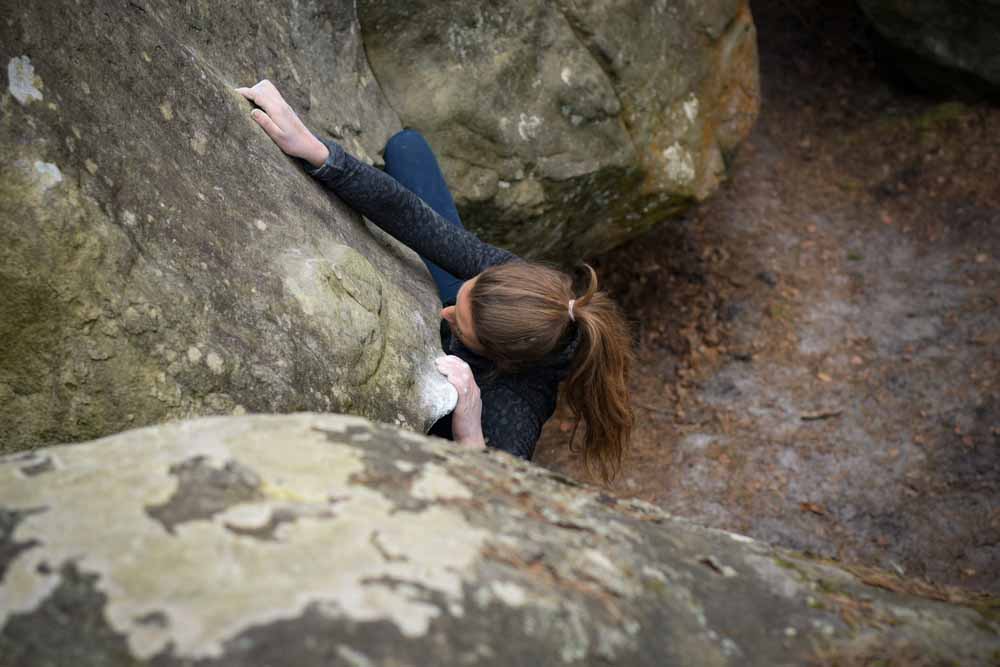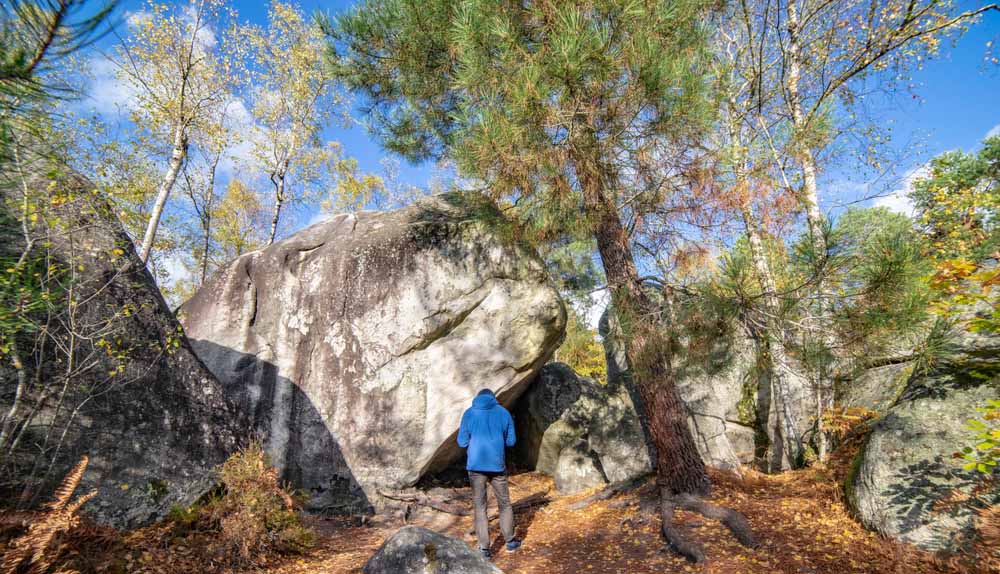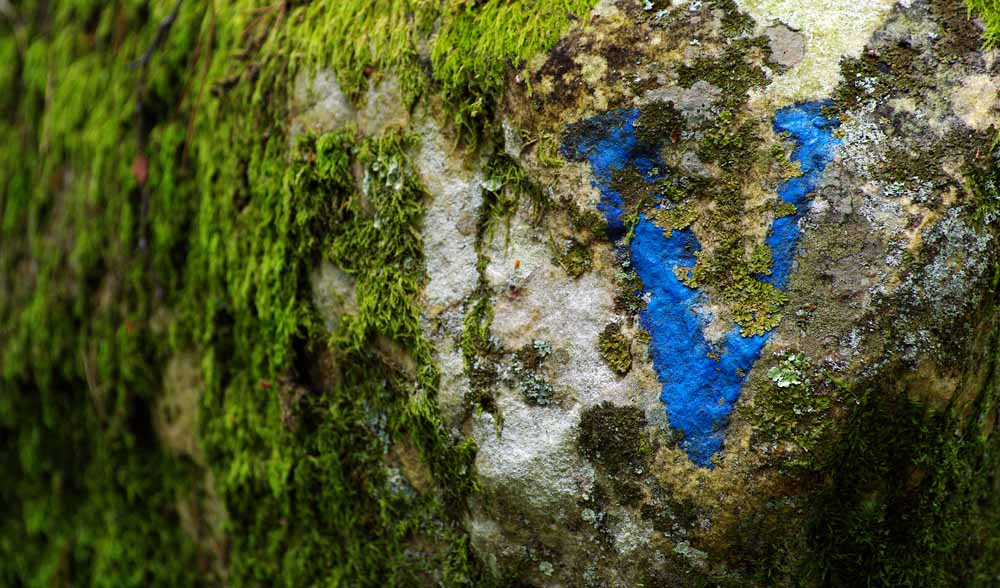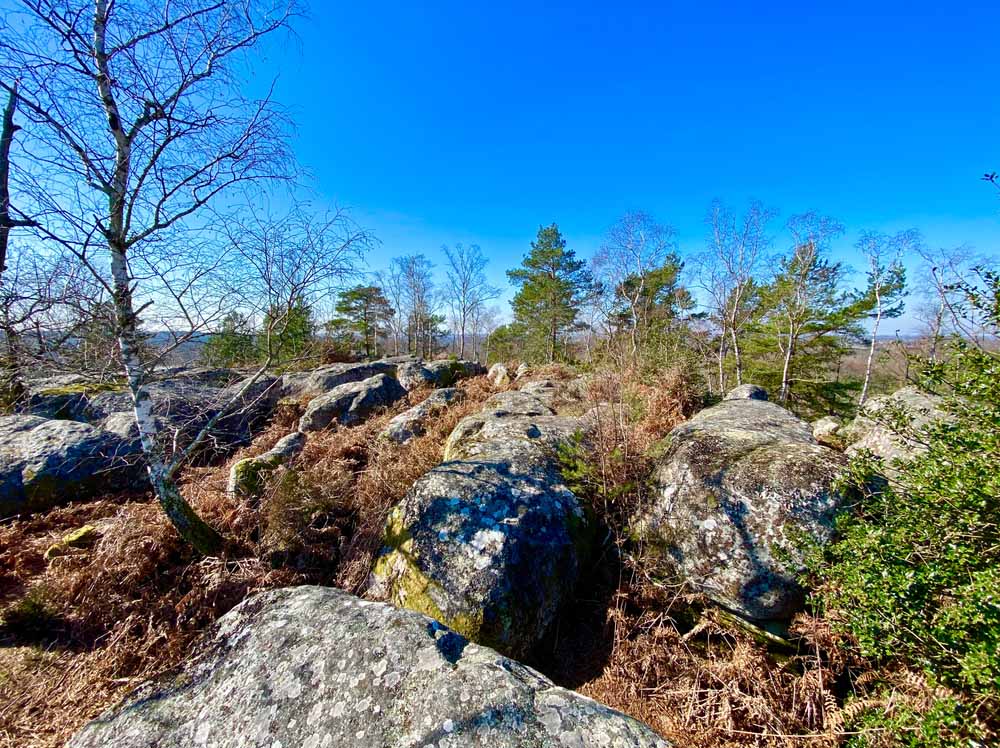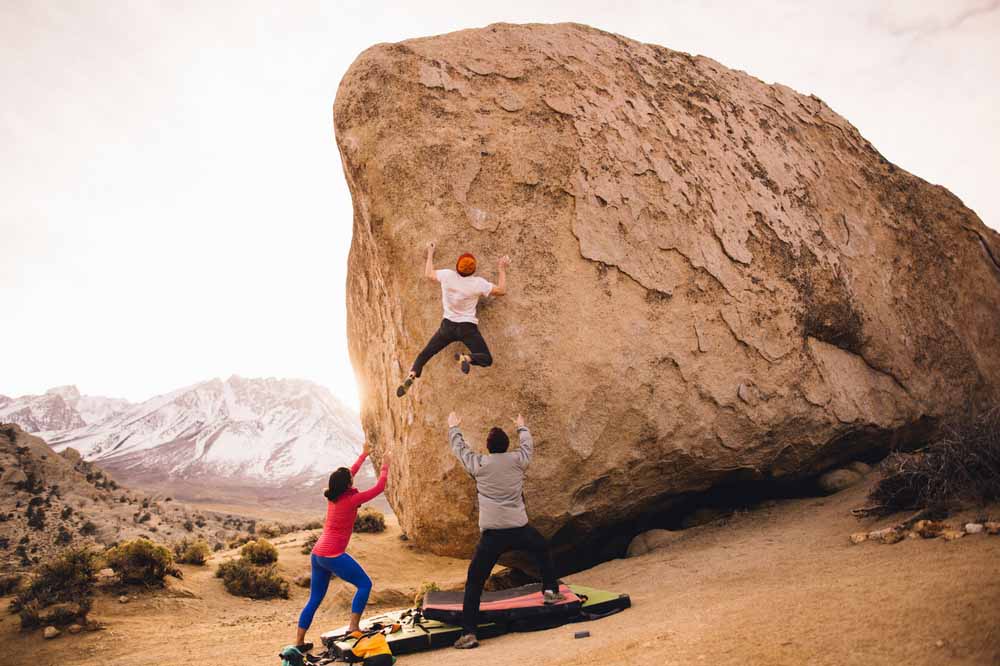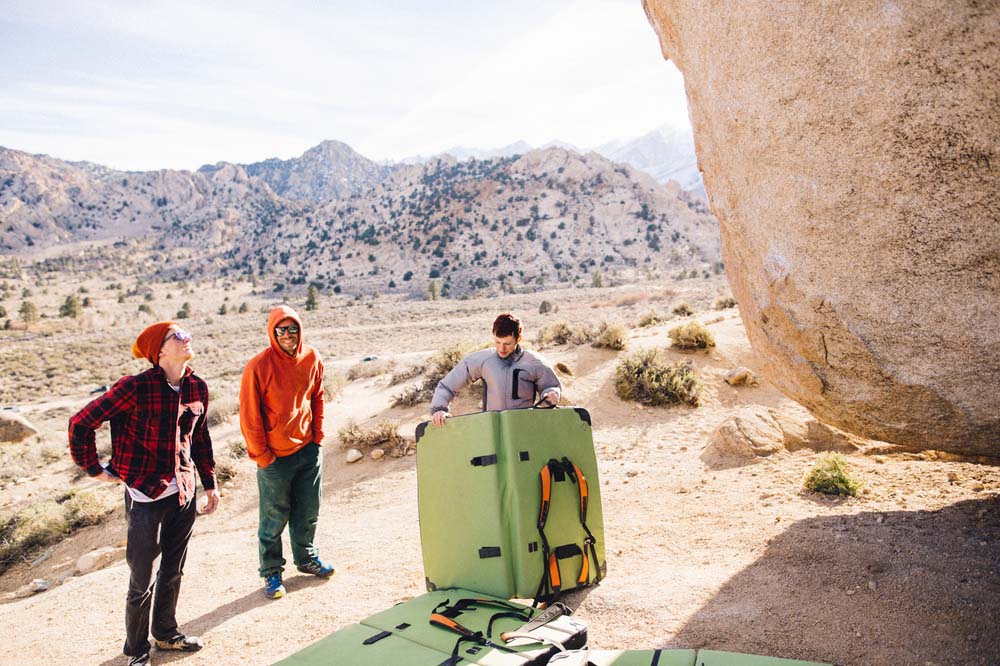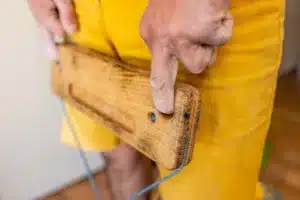Indoor rock climbing has become so popular that for some people, the sport only exists indoors in wonderfully colorful and air-conditioned spaces with foam floors and a cafe or bar. And if you read that and thought, “That’s what I thought,” I’m here to blow your mind.
Beyond the confines of state-of-the-art modern climbing gyms is a place called outside. Outside, there are boulders where you can go outdoor bouldering, and, believe it or not, outdoor bouldering is what inspired the indoor climbing gym you frequent every week.
Don’t get me wrong– I climb inside every week too. But outdoor bouldering is way better, so long as you don’t mind the dirt and bugs. So, if you’re curious about getting outside and testing out boulders intricately crafted by the world’s best route setter, also known as Mother Nature, keep reading.
What is bouldering?
Bouldering is a style of rock climbing where you climb on large boulders without using protection equipment like a rope, harness, or helmet. Typically, bouldering is performed relatively close to the ground on rock formations no larger than 10 to 15 feet. However, frequently, the boulders are smaller than that. Any higher, and you’re getting into the free solo side of things.
At the top of the climb, you can drop off the boulder. Or, you can use a different, easier section of the boulder to downclimb back to the ground.
To mitigate the risk of a bad fall, foam crash pads are positioned at the base of the boulder. The crash pads soften the landing, however, they cannot prevent you from hitting the ground. In other words, every fall is a ground fall when you go bouldering, which is why it’s one of the riskier forms of climbing despite occurring close to the ground.
Bouldering terminology
The world of bouldering has a ton of lingo. Here’s a short list of some of the most common bouldering terms.
- Boulder problem: bouldering routes are often called “problems” because they serve as puzzles you must solve to reach the top.
- Flash: Flashing a boulder is when you successfully climb the entirety of a boulder problem from the ground up without falling on your first attempt.
- Projecting: A project is a problem you haven’t solved yet, and projecting is the process of attempting the boulder and figuring out the sequence it requires to reach the top.
- Highball: a tall boulder where falling would have serious consequences.
- Lowball: a small boulder extremely close to the ground.
- Flapper: a skin injury where a calluses peels back but remains partially attached.
- Sit start: a boulder that is designed to be started from a seated position and your butt on the ground.
- Spotter: a climbing partner that positions crash pads and assist your landing when you fall off the boulder.
- Top out: topping out a boulder is when you successfully send the route and stand on top.
- V-scale: the bouldering grading system (at least in North America) designed and named after John “the Vermin” Sherman.
A Brief history of outdoor bouldering
In climbing, there’s a big “chicken or the egg” debate about whether or not bouldering came before other older climbing styles like mountaineering or aid climbing. When exactly bouldering came to be or where and who “invented” bouldering I don’t precisely know. But I would argue that bouldering did not come first.
It’s my understanding that the “first” form of climbing that became popularized was mountaineering in the mid to late 19th century. In particular, mountaineering in the European Alps, later known as alpinism, was the cutting edge of climbing at the time.
Back then, climbing was largely an adventurous endeavor into the unknown, where courageous climbers began pushing the limits of the human body and mind to summit large peaks, like the first ascent of the iconic Matterhorn in 1865.
Bouldering as a training tool
However, much like modern-day climbers, the early alpinists could not simply sit still in between expeditions or during the off-season. Instead, in preparation for climbs in the high peaks of the Alps and other impressive ranges worldwide, climbers kept themselves busy on small boulders.
For example, the boulders scattered throughout the forests of Fontainebleau became a popular stomping ground for European alpinists who wanted to continue climbing and stay fit when they couldn’t be in the Alps.
In particular, instead of climbing the easy way up, they sought out the most difficult route up the boulder (or at least so they thought). What manifested was a style of climbing that was powerful, acrobatic, highly technical, and hard. It was perfect for building strength and improving technique. Plus, it was simply fun.
Eventually, bouldering, once a training tool, became an entirely separate style of climbing. Climbers who appreciated the simplicity of the style began specializing and seeking out more and more bouldering routes to establish, a bouldering-specific grading system was invented, and purpose-built bouldering equipment was manufactured.
As a result, in modern times, bouldering has become one of the most popular and accessible forms of rock climbing. Recreational climbers seek out boulders in their free time, professional climbers dedicate their lives to bouldering, and it has become an Olympic sport.
Of course, bouldering is still seen as a training tool for some climbers, but now more than ever, bouldering is considered its own thing entirely.
Recommended equipment for outdoor bouldering
One of the major advantages of bouldering, when compared to other styles of rock climbing, is that it does not require a lot of equipment. This is especially true if you want to begin bouldering indoors. However, even bouldering outside does not require too much.
The basic kit for bouldering outside
To get started by yourself on smaller boulders with straightforward landings, you really only need three items.
- Climbing shoes
- Chalk bag or chalk bucket (with chalk, of course)
- Crash pad
Climbing shoes
In my opinion, climbing shoes are a must. Sure, you can scramble around on easy boulders in your hiking shoes, but if you want to start sampling harder boulders, the performance you get from climbing shoes is unparalleled.
For most bouldering, I prefer aggressively downturned and asymmetrical shoes that are sensitive and flexible. I prefer to have the shoe designed with extra rubber on the forefoot for toe hooking and a heel cup designed for heel hooking.
But ultimately, it’s best to match your climbing shoes to the type of rock and style of climbing you climb most.
Climbing chalk
Some climbers might argue that a chalk bag and chalk are not mandatory for bouldering. I would be inclined to agree. However, chalk is nice if your hands frequently sweat or if you are climbing in hot temperatures. Essentially chalk helps dry out the skin on your hands so you can get a better grip.
Chalk bags are designed to be worn around your waist and accompany you on the climb. On the other hand, chalk buckets are larger bags intended to stay on the ground.
Crash pads
Back in the early days of bouldering, climbers never used crash pads. But now, crash pads are commonplace, even for low-ball boulders super close to the ground. Modern crash pads are square pieces of foam that fold in half. For portability, they come equipped with backpack straps and handles.
In my opinion, the more crash pads you have to pad the landing zone of a boulder, the better. However, you can get started with a single crash pad so long as you can effectively position it below the hardest moves on the boulder or have a climbing partner move it as you advance through the climbing sequence.
The advanced kit for bouldering outside
The three items I listed above can get you started with outdoor bouldering. However, if you fall in love with the sport and begin bouldering all the time, you will inevitably invest in more equipment.
Here’s a list of other equipment you might consider.
- Climbing tape: This can be useful for taping fingers.
- A climbing brush: The holds on outdoor boulders can get dirty and require brushing.
- More crash pads: Bigger boulders and complex landing zones require more pads.
- More pairs of climbing shoes: A quiver of shoes can help you match the shoe to the style of climbing on the boulder.
- A skin file: Calluses are helpful, but if they get too big, you risk getting a flapper.
- A battery-operated fan: If the conditions are too hot, a fan can help dry your hands.
- A portable heater: If the conditions are too cold, a heater can help keep you warm.
Outdoor bouldering ethics
Like all styles of climbing, bouldering comes with unwritten rules or ethics. Typically, the ethical guidelines of the sport vary by geographical location. Therefore, you should abide by the local ethics of the zone you are bouldering in.
However, there are some more general best practices that I think apply no matter where you end up outdoor bouldering. So, to help you “break” fewer rules your first time bouldering outside, I wanted to share a few that I think are important.
Remove your tick marks
When climbers make a tick mark, they use chalk to intentionally signal the location of a climbing hand or foothold. Tick marking is a common practice in bouldering when someone is trying to memorize the sequence of the movement or if the climbing holds are hidden or hard to see.
Tick marking is an acceptable practice. But leaving your tick marks on the rock is bad form. That’s because it takes away from the next person’s climbing experience.
Refrain from playing loud music
Indoor climbing gyms have set the precedent that rock climbing is paired with music. However, that is not the case outside. If you like to listen to music when you climb, it’s best practice to use personal earbuds.
Limit your chalk usage
I like chalk, and it helps me rock climb better. You can figure out for yourself if chalk enhances your climbing performance. However, it’s essential to understand that there is a thing as too much chalk.
Remember– chalk’s primary job is to dry out your skin. It does not enhance the rock itself. Therefore, you don’t need to go out of your way to chalk climbing holds.
Share the boulder
Outdoor boulders are shared resources. That means that multiple climbers or parties of climbers have the right to enjoy the same boulder. So if it’s a busy day in the boulder field, it’s best practice to combine crash pads and take turns climbing on the boulder, just like you would if you were bouldering inside.
Refrain from dragging your pads
When moving pads around the landing zone of a boulder or from one boulder to the next, it can be instinctual to grab one of the handles and drag it across the ground. This is by far the easiest way to move the pad.
However, dragging crash pads is bad form. That’s because dragging crash pads contributes to irreversible erosion. So if the landing zone is not a durable surface and is comprised of soil or sand, it’s best practice to completely pick up the pad, move it where you want it, and place it.
Ultimately, much of what I just shared in terms of bouldering-specific ethical rules to follow can be summed up by the overarching concept of leaving no trace. None of the boulders we climb on outside are ours therefore, we must treat them as such. Furthermore, many of them exist in sensitive ecosystems that require our respect and care.
Pro tips for starting to bouldering outside
I’m not a pro boulderer, but these are tips I wish someone told me before I ventured out looking for boulders outside.
- Buy the local guidebook: It’s always nice to know where you are going and what you are climbing on.
- Pay attention to the weather: Climbing is a seasonal sport that is best when the temperatures are cool, humidity is low, and the chance of precipitation is scarce.
- Stash your shoes inside your puffy jacket when it’s cold: Cold shoes suck– your body heat can keep your shoes warm.
- Scope out the downclimb beforehand: Before pulling onto a boulder, it’s best practice to understand how you plan to get off the top after you send.
Final Thoughts – Go try outdoor bouldering
Whether you are completely new to rock climbing or have been climbing on ropes (i.e., top roping or sport climbing) and want to try something different, outdoor bouldering could be what you are looking for.
Bouldering outside is fun, social, relatively low commitment, and challenging. It’s perfect as a training tool to help you build strength and power for other climbing styles or as a stand-alone hobby you enjoy with family and friends.
I recommend starting indoors and then moving outside with more experienced climbers. If you love it, keep doing it!


